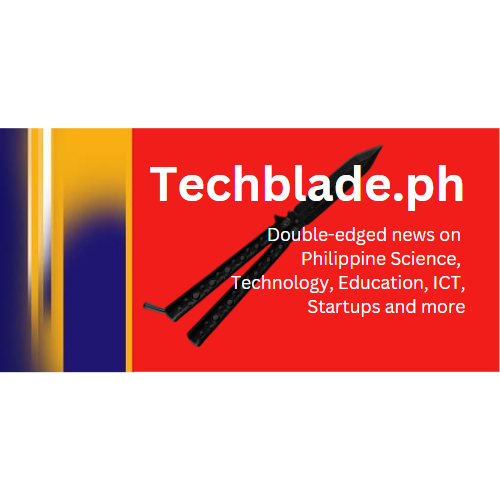“Look Beyond”, that was the challenge of Anton Philippe Tanquitic, a young Filipino physicist who bagged 2nd place in last year’s Nuclear Olympiad. Tanquitic issued the challenege to high school and college students who attended the First Nuclear Summit held last December in Manila. The students came from different schools in Metro Manila to learn about the challenges and opportunities in the field of nuclear science.
The Nuclear Congress was organized by the DOST and Philippine Nuclear Research Institute (PNRI). One of the highlights of the Third Philippine Nuclear Congress, the youth summit provided a forum to share nuclear information and scientific knowledge among the youth as potential leaders and scientists.
In his inspirational message, Hon. Yukiya Amano, director general of the International Atomic Energy Agency (IAEA), told participants that
“Some applications of nuclear technology might surprise you,” he said.
He revealed that IAEA has helped authorities in Nepal in determining the extent of damage in buildings and structures after the big earthquake using non-destructive testing techniques like radiography which he likened to taking an x-ray of a structure.
He also mentioned that IAEA provided a nuclear-derived technology to Africa during the Ebola outbreak which can diagnose the disease in four hours instead of four days using other diagnostic methods. Such time difference is vital in saving lives and preventing the further spread of the disease
He also commended the Philippines for being a very active member of the IAEA since 1958, adding that more than 300 Philippine nationals have worked under the IAEA Cooperation Program, sharing their knowledge and experience with other developing countries.
Dr. Teofilo San Luis Jr., a medical doctor set on going into gastroenterology, had a change of heart when he was offered a scholarship in nuclear medicine at the University of Bonn. He took the opportunity.
Dr. San Luis clarified that nuclear medicine is not at all about caring about those who had been involved in nuclear accidents, as those are very rare. Instead, nuclear medicine is used in diagnostics and also in the treatment of certain cancers such as thyroid cancer, lymphoma, and neuroblastoma which develops from immature nerve cells, among others.
Anton Philippe Tanquitic saw how his life change when he got the chance to join the Nuclear Olympiad
Then an intern at PNRI, Tanquitic related that he only learned about the contest a few weeks before the deadline but still managed to get into the finals where he had to submit an essay and do an oral presentation about his topic. Joining the event led him to other opportunities, such as the chance to explore Europe when he visited the IAEA headquarters in Vienna, Austria and CERN in Geneva, Switzerland all in one year. CERN stands for Conseil Européen pour la Recherche Nucléaire or the European Council for Nuclear Research.
The Nuclear Congress was organized by the DOST and Philippine Nuclear Research Institute (PNRI). One of the highlights of the Third Philippine Nuclear Congress, the youth summit provided a forum to share nuclear information and scientific knowledge among the youth as potential leaders and scientists.
In his inspirational message, Hon. Yukiya Amano, director general of the International Atomic Energy Agency (IAEA), told participants that
“Some applications of nuclear technology might surprise you,” he said.
He revealed that IAEA has helped authorities in Nepal in determining the extent of damage in buildings and structures after the big earthquake using non-destructive testing techniques like radiography which he likened to taking an x-ray of a structure.
He also mentioned that IAEA provided a nuclear-derived technology to Africa during the Ebola outbreak which can diagnose the disease in four hours instead of four days using other diagnostic methods. Such time difference is vital in saving lives and preventing the further spread of the disease
He also commended the Philippines for being a very active member of the IAEA since 1958, adding that more than 300 Philippine nationals have worked under the IAEA Cooperation Program, sharing their knowledge and experience with other developing countries.
Dr. Teofilo San Luis Jr., a medical doctor set on going into gastroenterology, had a change of heart when he was offered a scholarship in nuclear medicine at the University of Bonn. He took the opportunity.
Dr. San Luis clarified that nuclear medicine is not at all about caring about those who had been involved in nuclear accidents, as those are very rare. Instead, nuclear medicine is used in diagnostics and also in the treatment of certain cancers such as thyroid cancer, lymphoma, and neuroblastoma which develops from immature nerve cells, among others.
Anton Philippe Tanquitic saw how his life change when he got the chance to join the Nuclear Olympiad
Then an intern at PNRI, Tanquitic related that he only learned about the contest a few weeks before the deadline but still managed to get into the finals where he had to submit an essay and do an oral presentation about his topic. Joining the event led him to other opportunities, such as the chance to explore Europe when he visited the IAEA headquarters in Vienna, Austria and CERN in Geneva, Switzerland all in one year. CERN stands for Conseil Européen pour la Recherche Nucléaire or the European Council for Nuclear Research.









0 Comments